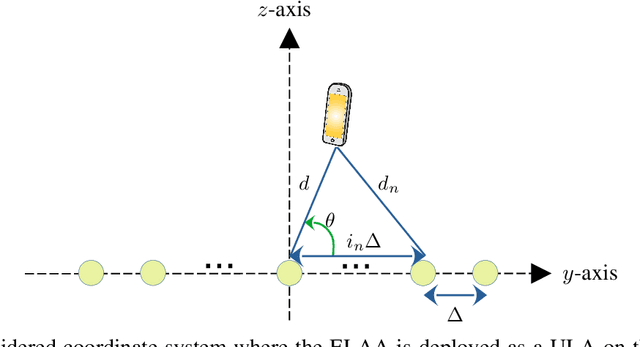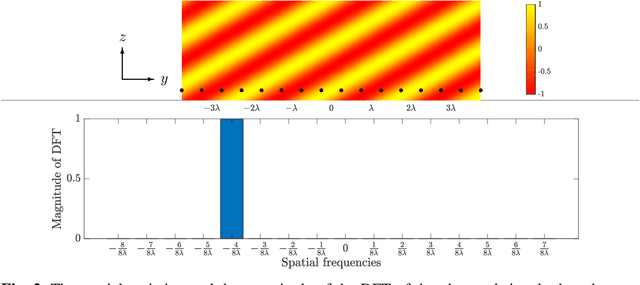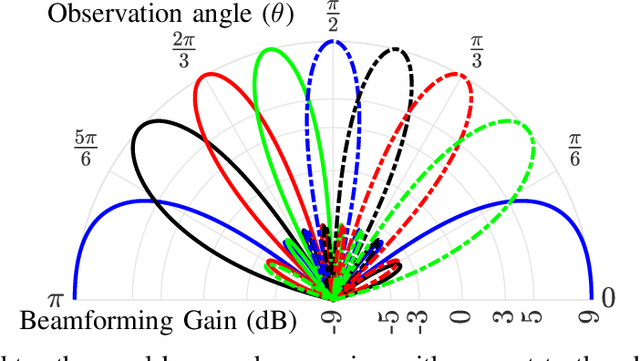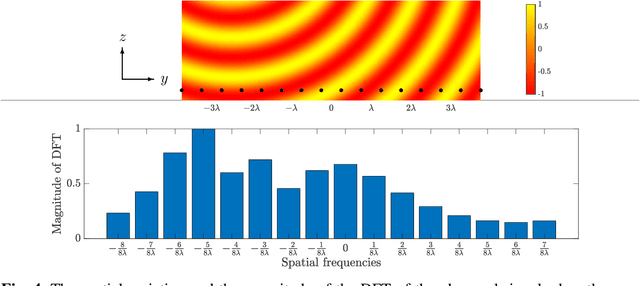Nikolaos Kolomvakis
Exploiting Mutual Coupling Characteristics for Channel Estimation in Holographic MIMO
Dec 18, 2024Abstract:Holographic multiple-input multiple-output (MIMO) systems represent a spatially constrained MIMO architecture with a massive number of antennas with small antenna spacing as a close approximation of a spatially continuous electromagnetic aperture. Accurate channel modeling is essential for realizing the full potential of this technology. In this paper, we investigate the impact of mutual coupling and spatial channel correlation on the estimation precision in holographic MIMO systems, as well as the importance of knowing their characteristics. We demonstrate that neglecting mutual coupling can lead to significant performance degradation for the minimum mean squared error estimator, emphasizing its critical consideration when designing estimation algorithms. Conversely, the least-squares estimator is resilient to mutual coupling but only yields good performance in high signal-to-noise ratio regimes. Our findings provide insights into how to design efficient estimation algorithms in holographic MIMO systems, aiding its practical implementation.
The Roles of Spatial Frequencies and Degrees-of-Freedom in Near-Field Communications
Jul 10, 2024



Abstract:As wireless technology begins to utilize physically larger arrays and/or higher frequencies, the transmitter and receiver will reside in each other's radiative near field. This fact gives rise to unusual propagation phenomena such as spherical wavefronts and beamfocusing, creating the impression that new spatial dimensions -- called degrees-of-freedom (DoF) -- can be exploited in the near field. However, this is a fallacy because the theoretically maximum DoF are already achievable in the far field. This paper sheds light on these issues by providing a tutorial on spatial frequencies, which are the fundamental components of wireless channels, and by explaining their role in characterizing the DoF in the near and far fields. In particular, we demonstrate how a single propagation path utilizes one spatial frequency in the far field and an interval of spatial frequencies in the near field. We explain how the array geometry determines the number of distinguishable spatial frequency bins and, thereby, the spatial DoF. We also describe how to model near-field multipath channels and their spatial correlation matrices. Finally, we discuss the research challenges and future directions in this field.
Enabling 6G Performance in the Upper Mid-Band Through Gigantic MIMO
Jul 08, 2024Abstract:The initial 6G networks will likely operate in the upper mid-band (7-24 GHz), which has decent propagation conditions but underwhelming new spectrum availability. In this paper, we explore whether we can anyway reach the ambitious 6G performance goals by evolving the multiple-input multiple-output (MIMO) technology from being massive to gigantic. We describe how many antennas are needed and can realistically be deployed, and what the peak user rate and degrees-of-freedom (DOF) can become. We further suggest a new deployment strategy that enables the utilization of radiative near-field effects in these bands for precise beamfocusing, localization, and sensing from a single base station site. We also identify five open research challenges that must be overcome to efficiently use gigantic MIMO dimensions in 6G from hardware, cost, and algorithmic perspectives.
Nonlinear Distortion Radiated from Large Arrays and Active Reconfigurable Intelligent Surfaces
Jan 23, 2024Abstract:Extremely large aperture arrays (ELAAs) and reconfigurable intelligent surfaces (RISs) are candidate enablers to realize connectivity goals for the sixth-generation (6G) wireless networks. For instance, ELAAs can provide orders-of-magnitude higher area throughput compared to what massive multiple-input multiple-output (MIMO) can deliver through spatial multiplexing, while RISs can improve the propagation conditions over wireless channels but a passively reflecting RIS must be large to be effective. Active RIS with amplifiers can deal with this issue. In this paper, we study the distortion created by nonlinear amplifiers in both ELAAs and active RIS. We analytically obtain the angular directions and depth of the nonlinear distortion in both near- and far-field channels. The results are demonstrated numerically and we conclude that non-linearities can both create in-band and out-of-band distortion that is beamformed in entirely new directions and distances from the transmitter.
 Add to Chrome
Add to Chrome Add to Firefox
Add to Firefox Add to Edge
Add to Edge